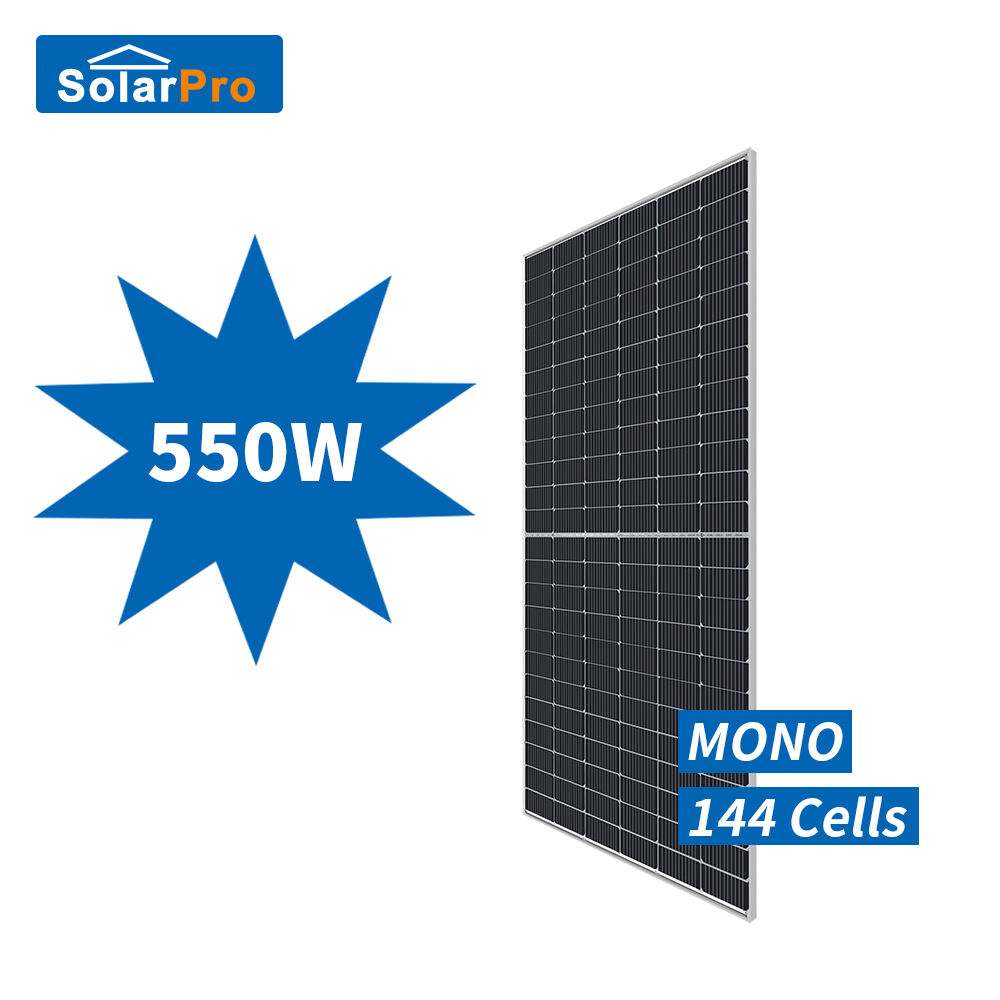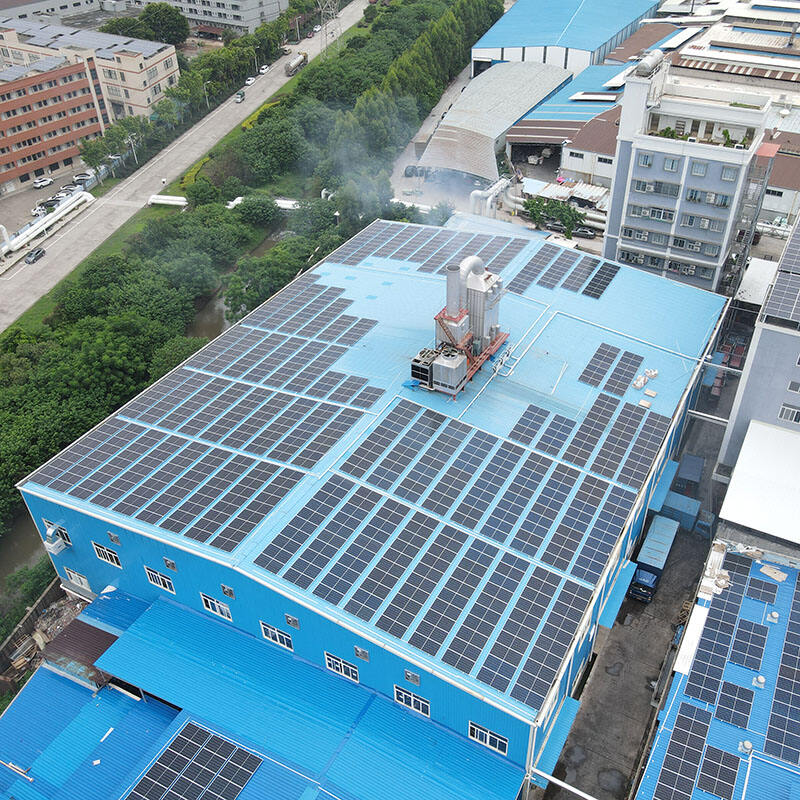Versatile Applications of Solar System Solutions
Solar-Powered Security Systems for Enhanced Safety
Security systems powered by solar energy tap into renewable resources to run cameras and alarm systems, cutting down on the need for regular electricity from the grid. Going this route helps meet green objectives since it uses clean energy while saving money too, especially useful for folks living far from town where power lines aren't reliable. Research from the Journal of Security and Sustainability found these setups actually cut crime rates because they keep watch all day long without interruption. Want to know how much money homeowners typically save? Or maybe looking at installation costs? There's plenty to consider when switching to solar based security solutions.

Agrivoltaics: Merging Agriculture and Solar Energy
Agrivoltaics is basically combining solar panels with farmland so farmers get two uses out of one piece of ground. The idea tackles the problem where farms need space for crops and power plants need room too. Some studies at Cornell show interesting results when they put panels over certain plants. These panels actually create shade that helps protect crops during hot weather while still making electricity from sunlight. Farmers report better yields on some vegetables grown under these conditions. Landowners can produce food and generate clean power at the same time without having to choose between them. Many see this as smart farming for the future since it supports both food security and green energy needs.

Off-Grid Solutions for Remote Communities
Solar systems that work independently of main power grids provide essential help for people living far away from cities where there's no regular electricity. The setup usually includes panels to catch sunlight, batteries to store energy, and devices called inverters that turn this stored power into something useful for homes and businesses. Many places around the world have seen big improvements after installing these kinds of systems. When villages get consistent electricity, hospitals can run medical equipment properly and schools stay open longer at night. This makes a real difference in everyday life for folks who previously had to rely on kerosene lamps or generators. Communities gain control over their own energy needs while helping protect the environment too. We're starting to see more and more villages lighting up thanks to these solar setups.

Advanced Technologies in Solar Energy Systems
3V Lithium Battery Innovations for Compact Storage
3V lithium batteries are changing how we store solar power because they pack more energy into smaller spaces. They last longer than traditional options too, so people get better value from their investment when using these in solar setups. As manufacturers keep working on improving battery tech, many analysts believe prices will drop while solar system efficiency goes up at the same time. Homeowners and businesses alike are starting to prefer these compact batteries since they take up less room but still deliver strong performance. This is helping push solar adoption forward across different sectors where space matters but reliable power storage remains essential.
Efficient Solar Electricity Battery Storage
Solar battery storage systems really matter when it comes to making the most out of solar panels because they store extra electricity produced when the sun is shining bright. Over the past few years we've seen some pretty good improvements in how well these batteries work, meaning more of that captured sunshine gets used instead of wasted. The numbers back this up too many homes and businesses report around 30% more effective energy usage after upgrading their storage options. When households have decent storage capacity, their solar setup just works better overall. People can manage their energy consumption smarter and don't need to rely so much on traditional grid electricity, especially during those times when the sun isn't cooperating.
Hybrid Systems for Uninterrupted Power Supply
Hybrid systems mix solar power with other renewables such as wind turbines or backup diesel generators to keep electricity flowing steadily. They really shine in places where relying solely on sunlight just doesn't cut it because weather conditions can be unpredictable. According to recent industry reports, we're seeing about a 30% rise expected in hybrid system installations across many parts of the world within the coming half decade. This trend shows people increasingly favor combining different clean energy options rather than sticking with one source alone. When multiple green technologies work together, these setups maintain continuous electricity even when individual components falter, making them much more dependable for communities facing varied environmental challenges day after day.
Overcoming Challenges in Solar Implementation
Weather Resilience and Panel Durability
Solar panels need to stand up against all sorts of harsh weather if they're going to last any decent amount of time. We're talking about things like hail storms, hurricane force winds, and mountains of snow piling up during winter months. Manufacturers have been working on better materials lately, which means panels today can take quite a beating without breaking down so quickly. Take tempered glass for instance – it's way tougher than what was used before. And there are special coatings now that protect against corrosion from salt air near coastal areas. According to numbers from IRENA, these improvements actually pay off financially too. Panels that last longer obviously give investors more bang for their buck since they keep generating electricity year after year without needing replacement. That makes sense when looking at long term returns on solar investments.
Cost-Effective Strategies for Widespread Adoption
Making solar power something more people can actually afford requires some smart approaches. Bulk buying options and taking advantage of government rebates really help cut down those upfront costs that keep many folks away from going solar. We're starting to see public and private groups team up to fund these solar initiatives, particularly in places where access has been limited. The Solar Energy Industries Association put out a study showing that when we lower those extra costs tied to installing solar panels, more people end up adopting this clean energy source. Getting these prices down means regular homeowners and businesses alike find it much easier to switch to solar, which is good news all around for our wallets and the planet too.
Bridging the Gap with Smart Grid Integration
Smart grid tech really matters when it comes to managing our energy resources properly and getting solar power connected to the main electricity networks across the country. What these systems do is help balance when we need power versus when it's actually available, which cuts down on blackouts and makes sure electricity gets where it needs to go. The US Department of Energy did some research showing that upgrades to smart grids could boost how reliably solar power works with existing infrastructure by around 40 percent. This kind of improvement helps keep everything running smoothly on the grid while making room for more green energy options. Plus, it means we can move energy around smarter so we waste less of it. Looking ahead, integrating smart grid capabilities seems absolutely necessary if we want our solar installations to work well into the future without constant problems.
Future Trends in Solar Energy Solutions
Floating Solar Farms for Land Optimization
Solar farms that float on water are becoming a smart way to make better use of space since they install panels on lakes and reservoirs instead of taking up valuable ground. What's great about this setup is that it avoids disputes over land usage while actually boosting how much electricity gets generated. When solar panels sit on water, they cut down on evaporation and stay cooler than their land-based counterparts, which means they produce more power overall. Research suggests we might see around half again as much capacity installed worldwide by 2030 if these floating systems continue gaining traction. Countries struggling with limited space, such as Japan and Singapore, are already finding new ways to tap into solar energy through these aquatic installations according to Future Market Insights from last year.
Workforce Diversification in the Solar Industry
Solar companies across the country are now putting more effort into bringing diverse people into their ranks because they need fresh ideas and want to fill open positions. Many firms have started up training sessions specifically for folks from backgrounds traditionally left out of tech fields, which helps create a more welcoming environment while connecting with different communities. According to recent studies, teams with varied perspectives tend to solve problems better and perform stronger overall within these businesses. The push toward diversity isn't just good ethics it actually makes business sense too since having varied talents allows solar firms to keep pace with changes happening fast in technology and operations. Looking ahead, as more companies implement these inclusion efforts, we should see them play a major role in how successfully the entire sector grows over time.
Global Market Projections and Sustainability Goals
Solar power markets around the world are experiencing unprecedented expansion thanks to growing interest in clean energy sources and government mandates pushing for greener alternatives. Countries setting ambitious environmental targets have become major investors in solar infrastructure projects, which continues to boost market momentum. According to recent studies, experts predict solar could supply over 30% of all electricity worldwide by 2030. Technological improvements keep making panels more efficient while prices continue dropping, leading to rapid installations across both residential and commercial sectors. Future Market Insights released their findings earlier this year showing this trend accelerating faster than many expected. What makes solar so attractive? Its direct compatibility with most nations' climate change commitments means governments will likely keep supporting its development for years to come.







 Hot News
Hot News